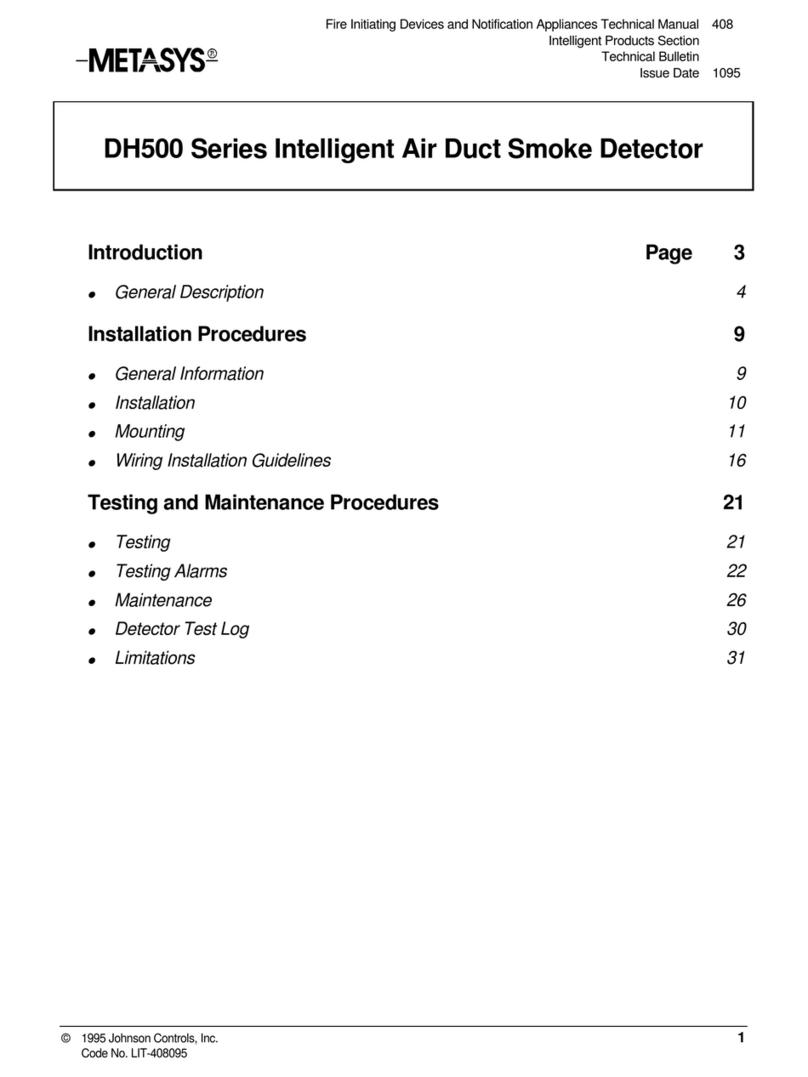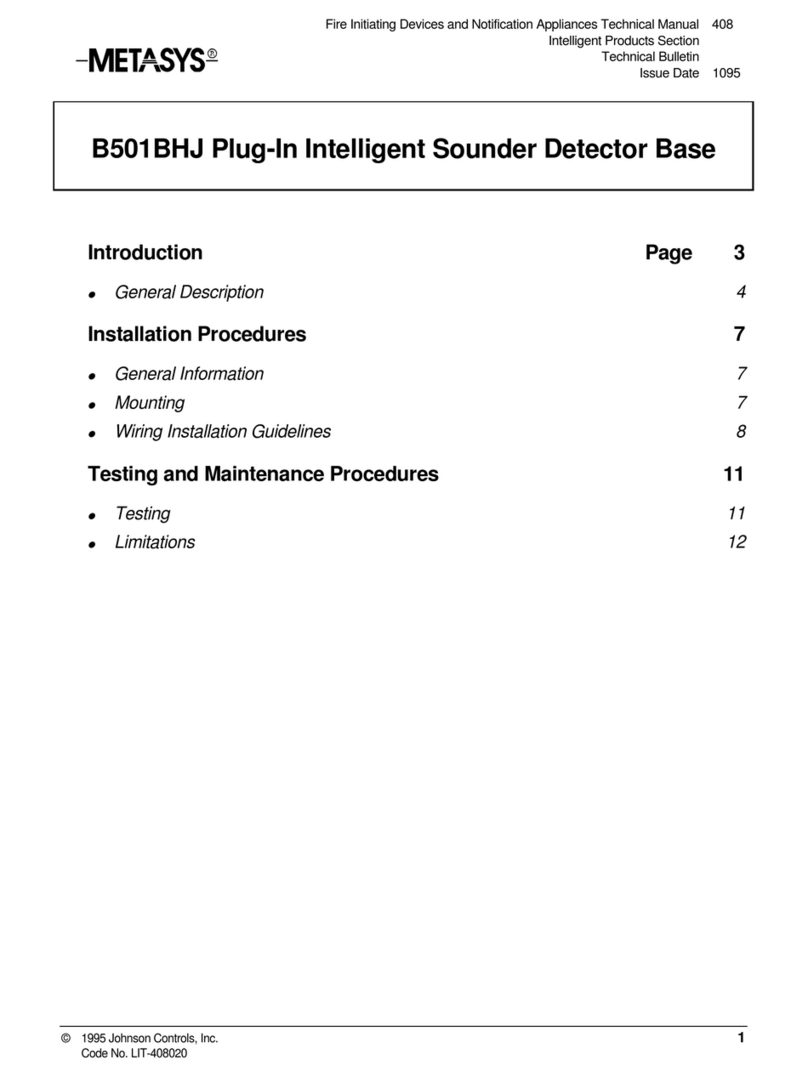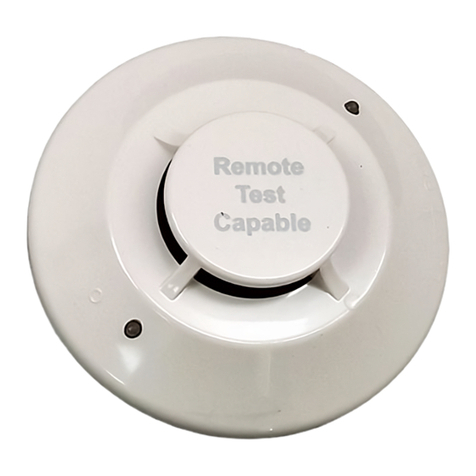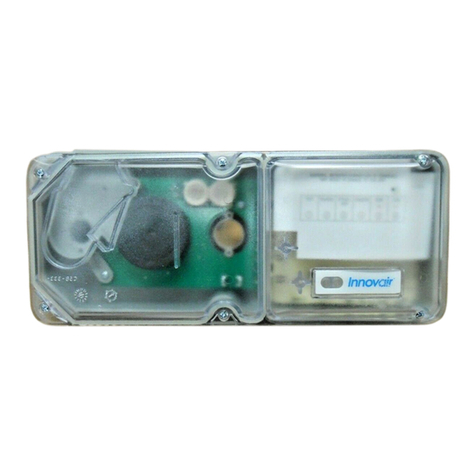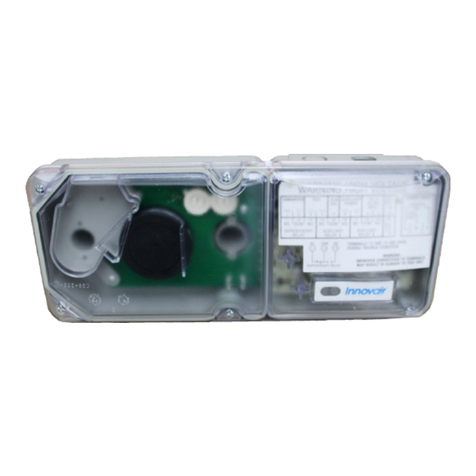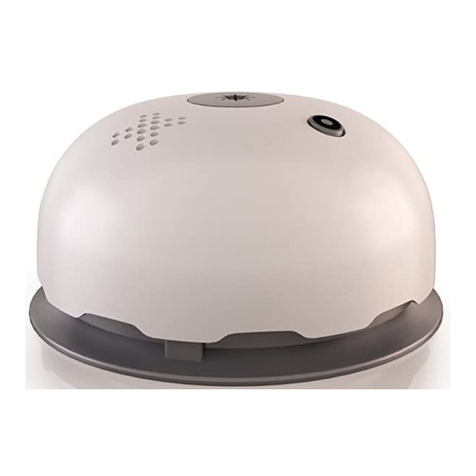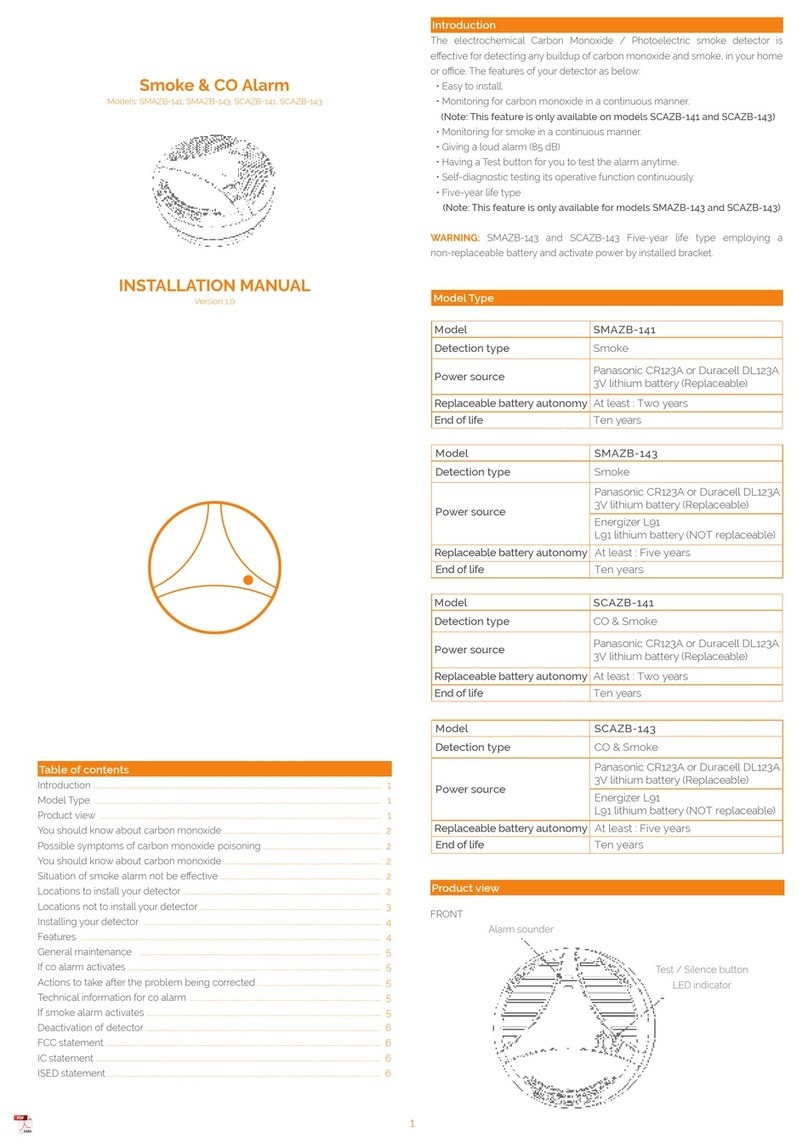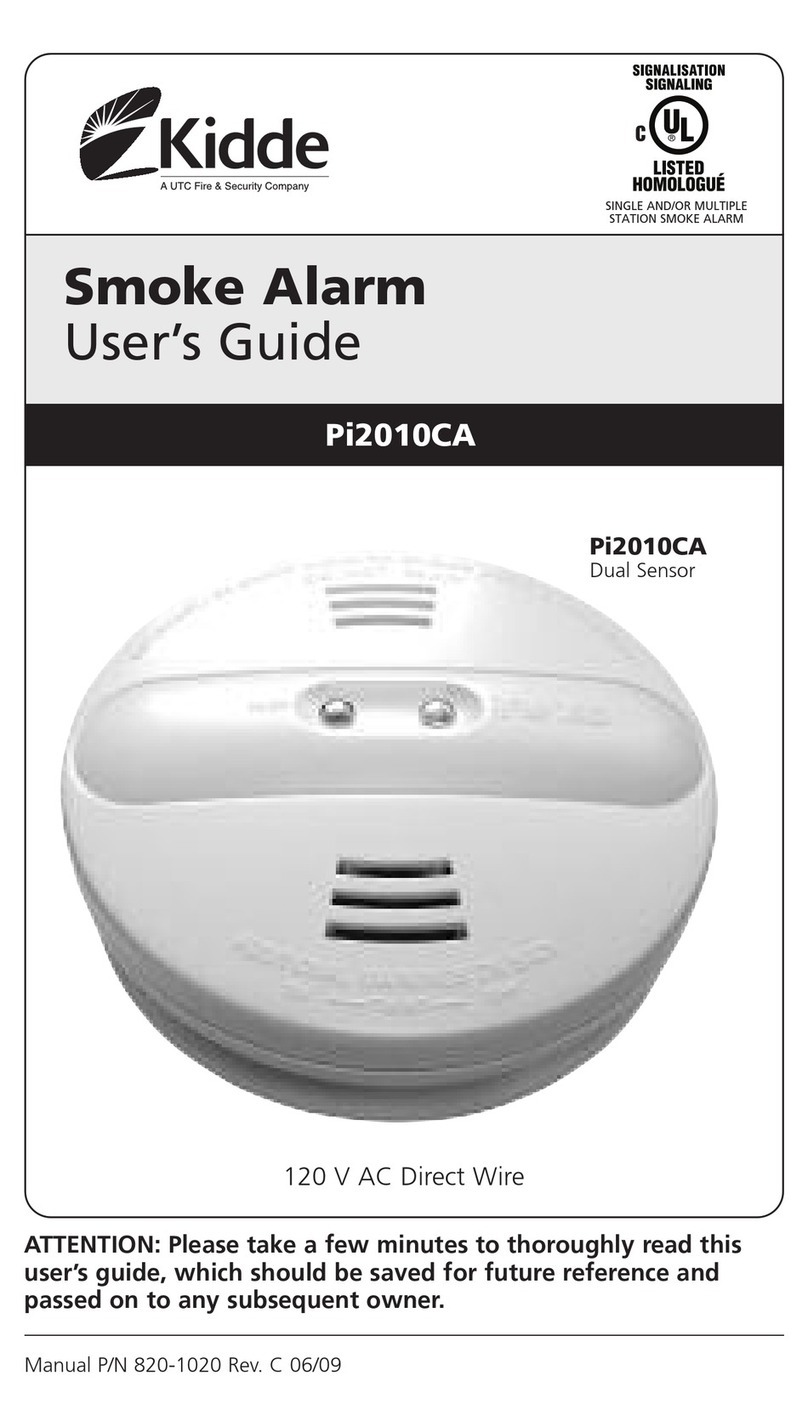
4 Conventional Products—2400 and 2400TH Direct 2-Wire Smoke Detectors
The 2400 photoelectronic detectors use state-of-the-art, optical sensing
chambers. These detectors are designed to provide open area protection,
and are intended for use with compatible UL Listed 2-wire control panels
only. The detector’s operation and sensitivity can be tested in place.
Model 2400TH has the same specifications as model 2400, but also
features a restorable, built-in, fixed temperature (135°F) heat
detection unit.
These detectors are listed to UL 268 and are latching type system
detectors. When latched in alarm, the detectors must be reset by a
momentary power interruption.
A Light Emitting Diode (LED) on the detector provides a local indication
of the detector’s status. This LED blinks every ten seconds when the
detector is receiving power and ready in standby, and is latched on
continuously in alarm until the detector is reset. The detector provides an
output for connection to an optional remote annunciator (model RA400Z).
The remote annunciator mounts to a single gang box and provides a
supplementary alarm indication.
Table 1: 2400 Series Direct Wire Smoke Detectors
Model Control Description Operating Current Consumption
Panel Voltage Standby
(Min) Alarm
(Max)
2400 2-wire Photo Detector 12/24 VDC 120 µA --
2400TH 2-wire Photo Detector with Fixed
Heat Sensor 12/24 VDC 120 µA --
2400AT 2-wire Photo Detector with Fixed
Heat Sensor and Horn 24 VDC 120 µA 67 mA
2400AIT 2-wire Photo Detector with
Isolated Heat Sensor 24 VDC 120 µA 67 mA
2412AT 4-wire Photo Detector with Fixed
Heat Sensor and Horn 24 VDC 120 µA 51 mA
2424AT 4-wire Photo Detector with Fixed
Heat Sensor and Horn 24 VDC 120 µA 43 mA
2424AIT 4-wire Photo Detector with
Isolated Heat Sensor and
Horn
24 VDC 120 µA 43 mA
General
Description
